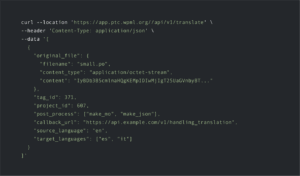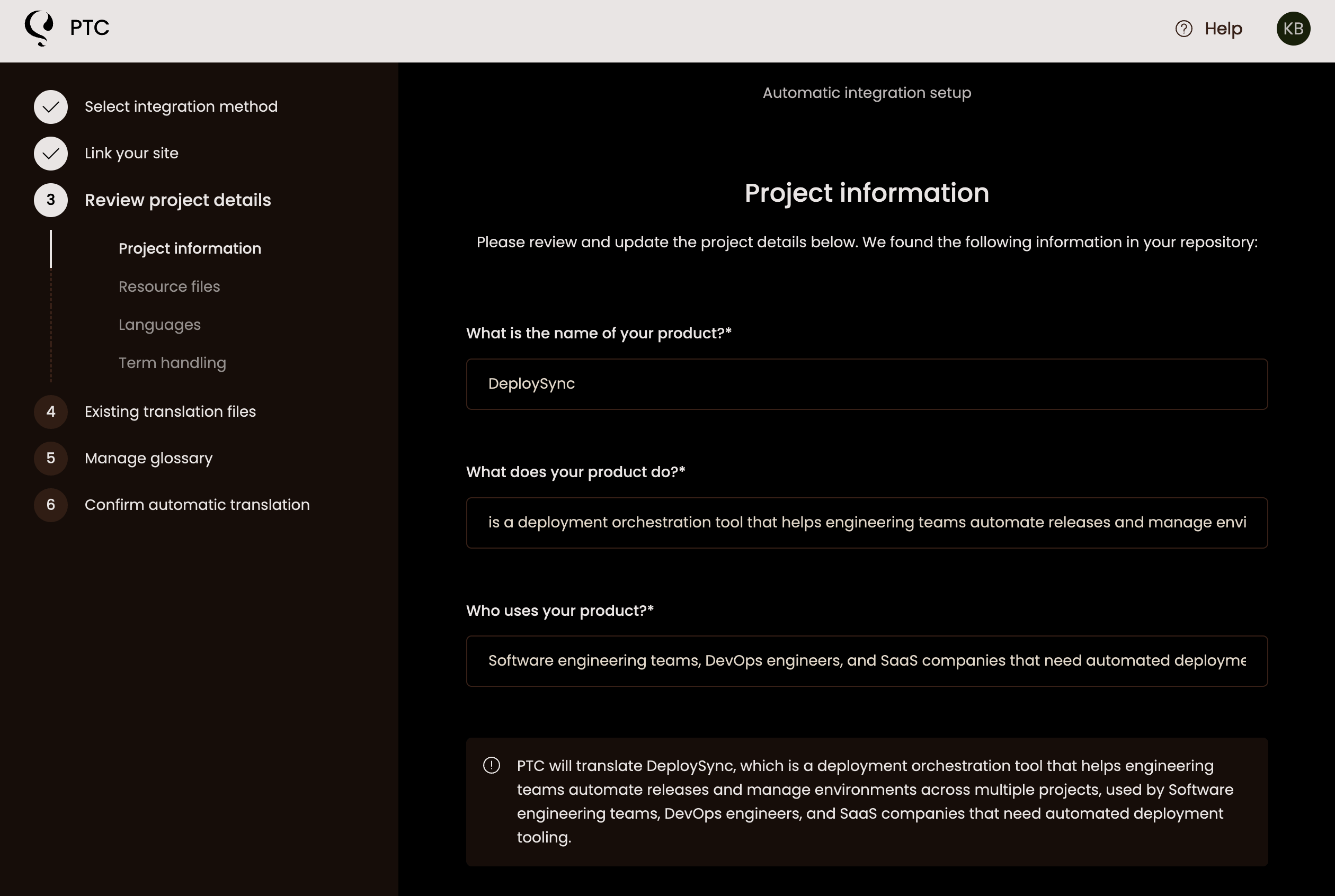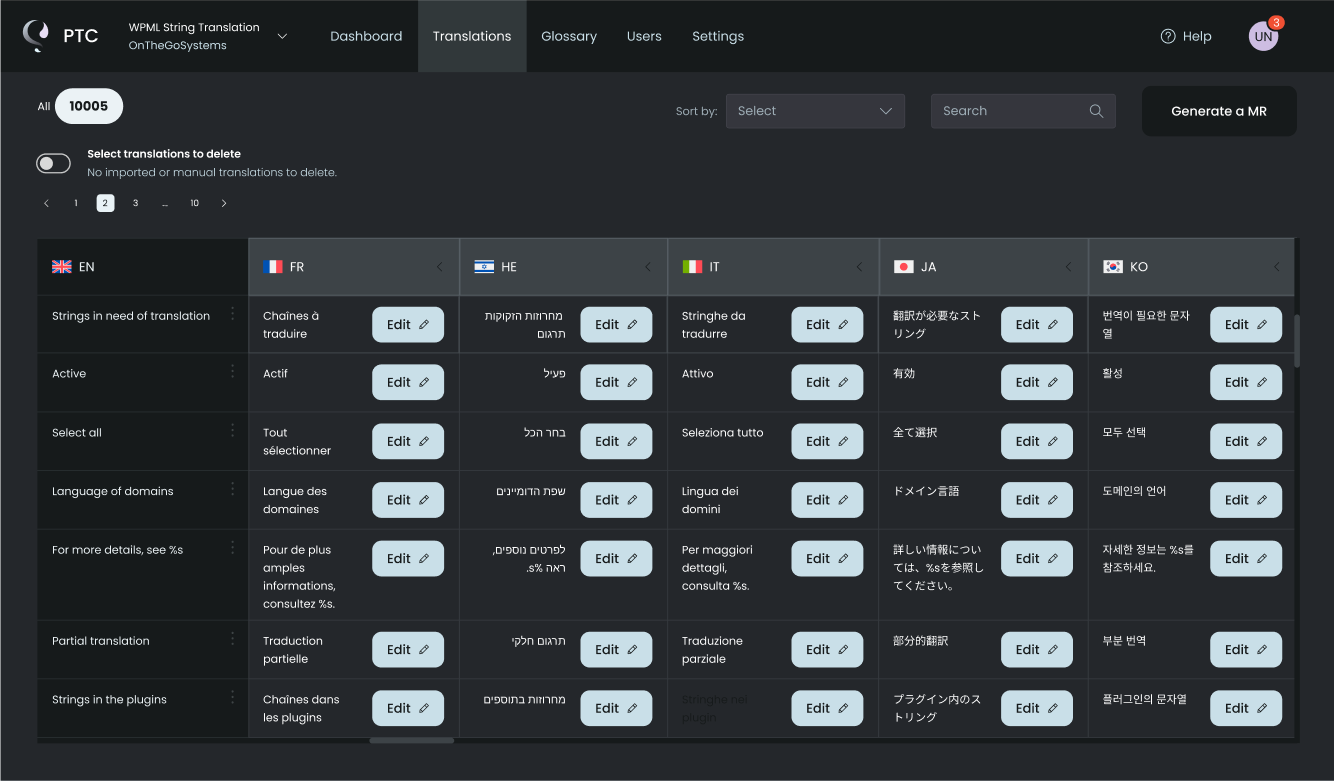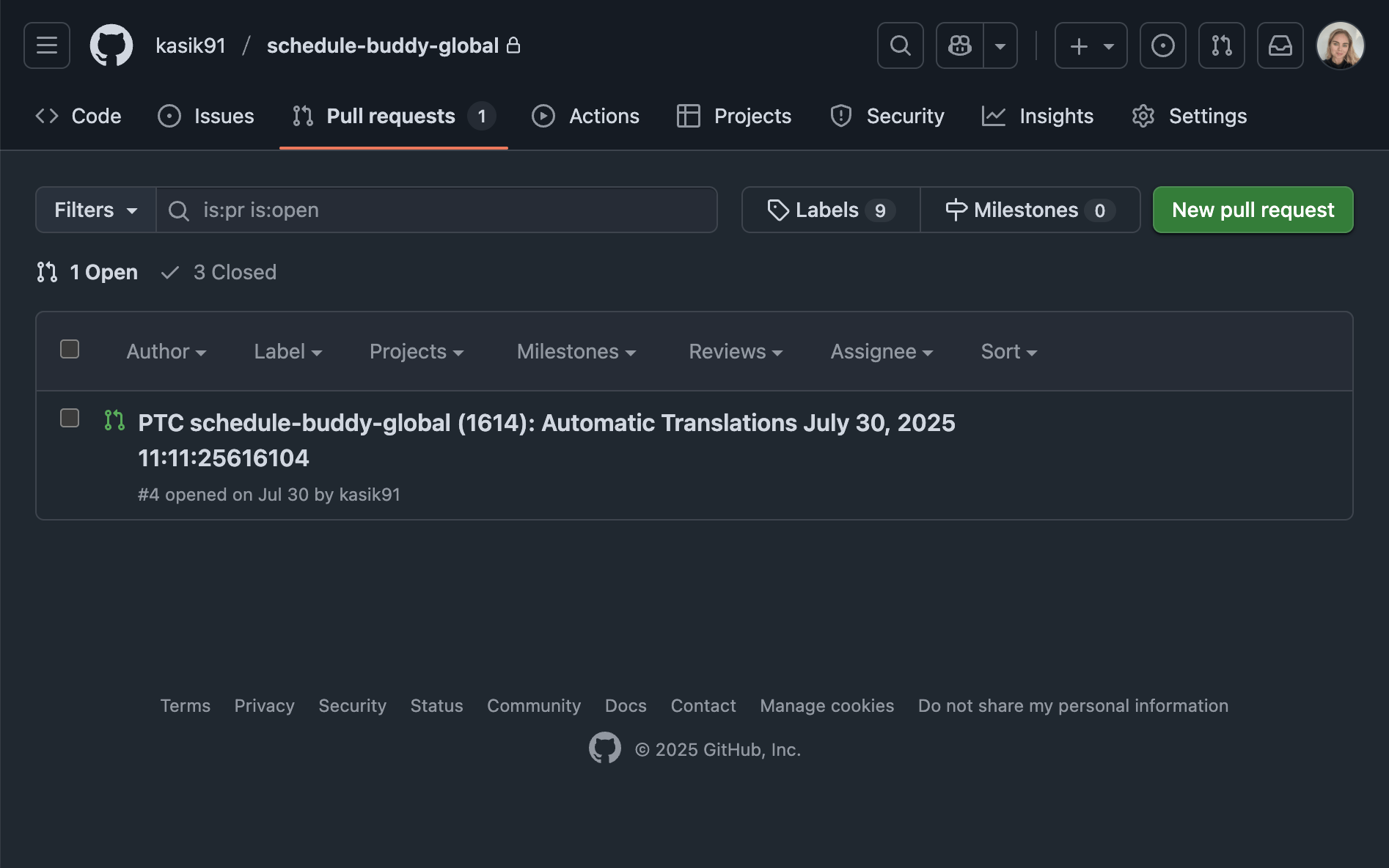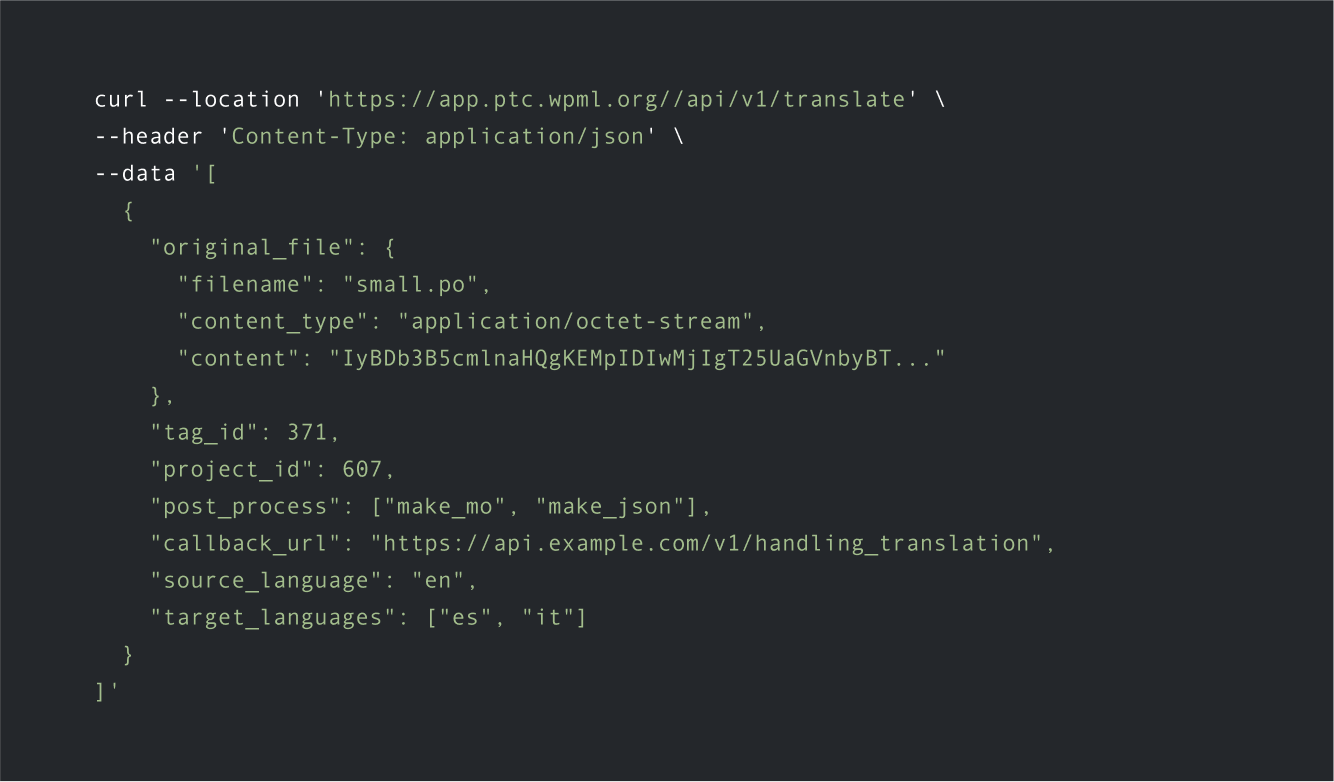This guide walks you through creating a project in PTC, adding your resource files, and getting your first AI translations.
Step 1
Sign up for PTC
Start by creating your PTC account:
- Sign up for a free trial.
- Check your email for your login details.
- Log in to your PTC dashboard.
Once you log in, click New project to begin the setup wizard.
Step 2
Choose How You Want to Use PTC
Choose between three translation methods for your project:
Manual File Upload
How it works:
Upload your resource files from your device. PTC translates them and returns a ZIP file with your translated files in the same format.
Best for:
Trying PTC immediately without setting up an automated workflow.
What’s required:
A resource file with translatable strings in a supported file format.
Git Integration
How it works:
Connect PTC directly to your GitHub, GitLab, or Bitbucket repository. PTC monitors your repository for updates, translates new or changed strings, and delivers translations via merge requests.
Best for:
Development teams using Git who prefer continuous localization without adding CI steps.
What’s required:
Grant PTC read and write access to your repository and add your access token in the PTC setup wizard. PTC only writes translation files and never modifies your code.
More details:
See the integration guides for full setup steps: GitHub • GitLab • Bitbucket
API Integration
How it works:
Use the PTC REST API to add and update source files, retrieve project information, manage translations, and integrate localization into your CI/CD pipeline.
Best for:
Projects that need translation tasks triggered and managed programmatically as part of the development workflow.
What’s required:
You’ll receive your API token in the setup wizard. Include this token in the Authorization header of every request.
More details:
See the PTC API Reference for full authentication and endpoint details.
Step 2.1
Link Your WPML Site (Optional)
If your product also has a multilingual website built with WPML, you can connect it to PTC during setup. PTC will:
- Import and sync with your WPML glossary
- Share translation memory with WPML’s Advanced Translation Editor
- Align terminology between your website and software
- Share translation credits between WPML and PTC
Step 3
Tell PTC About Your Project
Give PTC context about your software so it can produce accurate, natural-sounding translations. This includes:
- The product name and a brief description
- Your target audience
- How to handle common terms (for example, whether to translate “email”)
The information you provide here influences the terminology, tone, and formality of your translations.
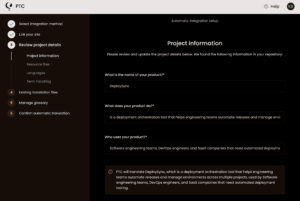
Step 3.1
Add Your Resource Files
Add the resource files that contain the text you want PTC to translate. Then confirm how your translated files should be generated, including output file names and where the translated files should be saved.
Depending on your project, you may store strings in one or more file formats. PTC can translate a wide range of resource file formats, including:
Gettext.po
JSON
YAML
Adobe Commerce / Magento .csv
Android
Apple .strings
Apple .stringsdict
Apple .xcstrings
Java Properties
JSON Array
See all supported file formats →
If you choose API integration, you won’t see this step. You’ll receive your API key at the end of the setup wizard and upload your resource files programmatically.
Step 3.2
Select Your Target Languages
Choose the languages you want PTC to translate your project into. PTC currently supports 33+ languages.
- During the free trial, you can select up to 2 languages.
- With a paid subscription, you can select an unlimited number of languages.
You can add or remove languages later in Settings → Languages.
View all supported languages →
Step 4
Upload Existing Translations (Optional)
PTC delivers the best results when it can translate your project from scratch using its AI and your project context.
However, if you already have existing translations, you can upload them during setup. PTC will use the translations you provide, and for any strings that don’t have translations, it will generate AI translations.
How to upload files with existing translations→
Step 5
Create a Glossary
PTC uses your project context to create translations that match your product’s tone and audience, so you don’t need a large glossary. It also automatically adds your product’s name to the glossary.
If you have product names or brand terms that require specific translations, you can add them to ensure consistency.
You can add and manage glossary terms at any time after setup by opening the Glossary tab in your PTC dashboard.
More about the glossary in PTC→
Step 6
Get Your AI Translations
Once you finish the project setup, PTC will translate your resource files. How you receive your translations depends on the method you selected:
Manual File Upload:
Download a ZIP file with your translations from the Resource files tab in your dashboard.
Additionally, you can view and edit translations from the Translations tab in your PTC dashboard.
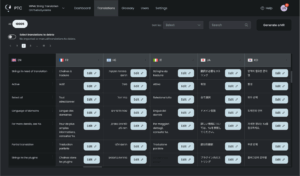
Git Integration:
PTC delivers translations to your repository via a merge request.
From there, you can review and merge the changes when you’re ready.
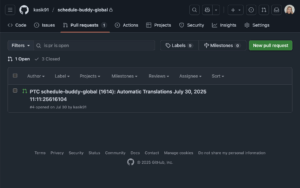
API Integration:
After receiving your API key, use the API endpoints to upload your source files, request translations, and download them.
When your translations are ready, PTC sends a callback notification. After that, you can retrieve the translated files through the API.
